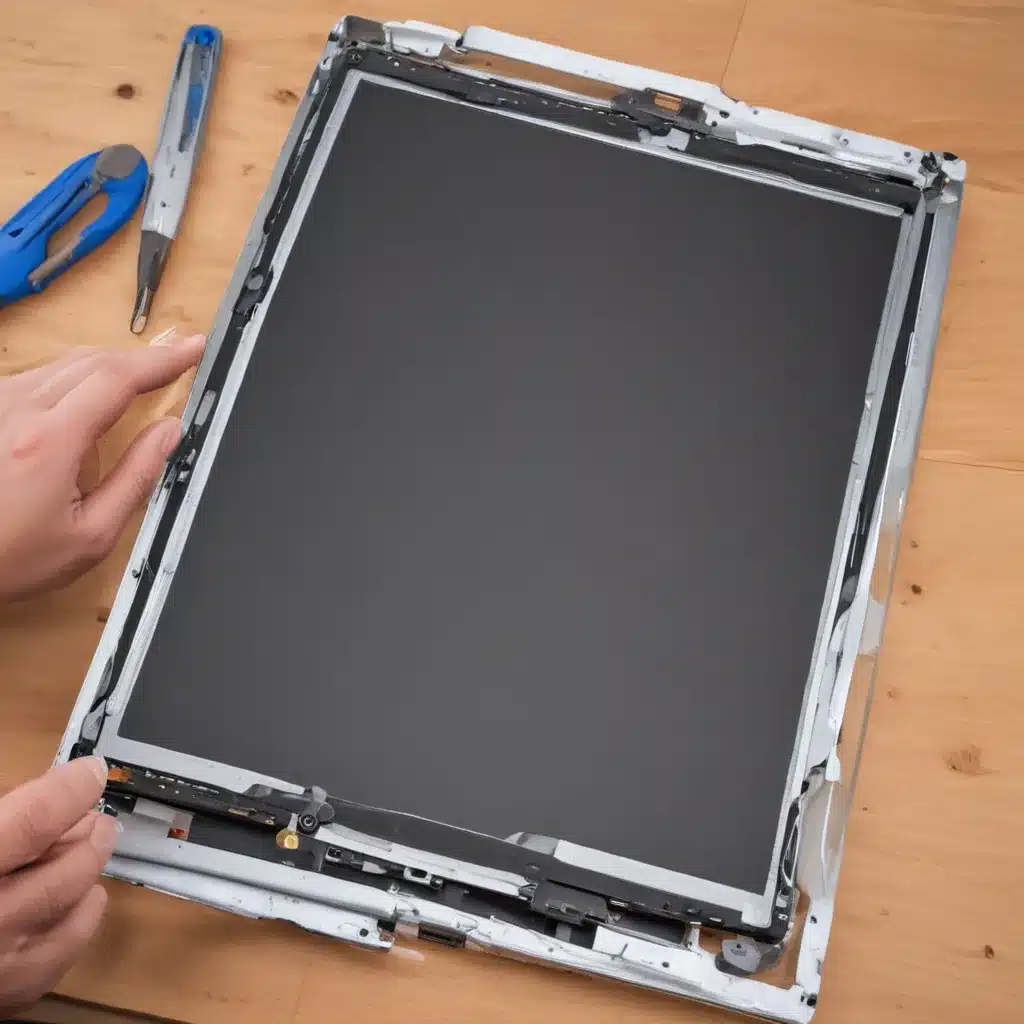
The Perils of DIY Screen Repairs
Oh, the infamous screen repair saga – a tale of cracked glass, lost productivity, and the heartache that comes with a malfunctioning device. As someone who has been in the computer repair game for quite some time, I’ve seen it all. From iPhone screens that shatter like a jilted lover’s heart to Samsung displays that go on the fritz, the struggle is real. And you know what they say, “With great screen replacement comes great responsibility.”
Now, I get it, the prospect of fixing your own device can be tempting. After all, who doesn’t love a good DIY project, right? But before you grab your toolbox and go to town on that busted screen, let me tell you – it’s not as easy as it looks. In fact, it can be downright dangerous if you don’t have the right tools and parts on hand.
The Importance of Genuine Parts and Proper Tools
You see, our beloved gadgets are a delicate bunch. They’re like the high-maintenance friends we all have – they require special care and attention, lest we want to end up with a bigger mess on our hands. And when it comes to screen repairs, using the wrong parts or tools can be a recipe for disaster.
Imagine trying to replace your screen with a knock-off part you found on some shady website. Sure, it might be a few bucks cheaper, but let me tell you, those savings ain’t worth it. Oftentimes, these cheap imitations are made with inferior materials and can cause all sorts of issues, from touch sensitivity problems to complete device failure. Trust me, you don’t want to be that person who ends up with a paperweight instead of a functioning device.
And then there’s the tool situation. You might think, “Eh, I’ve got a set of screwdrivers in my junk drawer, that’ll do the trick.” But let me stop you right there, my friend. Proper repair tools are a must-have when it comes to delicate electronics. Using the wrong screwdrivers, for instance, can strip the heads of your screws, making it impossible to put your device back together. And don’t even get me started on the importance of anti-static equipment – one wrong move and you can kiss your device goodbye.
The Dreaded Touch Screen Calibration
But wait, there’s more! Once you’ve managed to swap out that screen, you might think you’re in the clear. Well, think again. Oftentimes, the true test comes in the form of touch screen calibration.
You see, these screens aren’t just a pretty face – they’re highly sensitive and require a delicate touch. And if you don’t get the calibration just right, you can end up with all sorts of issues, from erratic cursor movements to phantom taps that open up apps you never intended to use.
I remember one particularly frustrating case where a customer brought in their iPhone 5c, convinced that they could handle the screen replacement themselves. Well, let’s just say that the end result was a lot more “touch and go” than they bargained for. The poor thing would respond to the lightest brush of a finger, but then completely ignore more deliberate taps. It was like trying to play a game of Whack-a-Mole, but the moles had a mind of their own.
The Importance of Proper Safety Precautions
Now, I know what you’re thinking – “But I’m a DIY master, I can totally handle this!” And to that, I say, “Slow your roll, my friend.” Because when it comes to screen repairs, safety should always be your number one priority.
You see, these devices are packed with all sorts of delicate components, and if you’re not careful, you can easily end up with a nasty shock or worse. I’m talking about those pesky residual voltages that can linger in the circuit boards, just waiting to zap the unsuspecting repair-person.
And let’s not forget about the potential for physical harm. Broken glass, sharp edges, and the occasional dropped screw can all lead to some pretty gnarly injuries if you’re not properly equipped. I mean, have you ever tried to extract a wayward screw from your finger? Trust me, it’s not a pleasant experience.
The Bottom Line
So, there you have it, folks – the harsh realities of DIY screen repairs. While the temptation to save a few bucks might be strong, the risks far outweigh the potential rewards. Trust me, it’s just not worth the hassle, the headache, and the potential for disaster.
My advice? Leave the screen repairs to the professionals. They’ve got the tools, the parts, and the know-how to get the job done right, without putting your precious device (or your own well-being) at risk. Sure, it might cost a little more, but in the long run, it’s a small price to pay for peace of mind and a fully functioning device.
And who knows, maybe one day you’ll be the one dishing out the advice to the next generation of would-be DIY screen repair enthusiasts. After all, the circle of life continues, and the cautionary tales must be told.












